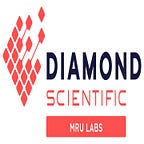Choosing Optima 7 Biogas: A Guide for Renewable Energy Enthusiasts in the USA
In the dynamic landscape of renewable energy, the quest for sustainable and efficient solutions has led to the emergence of groundbreaking technologies, and at the forefront of biogas analysis stands the Optima 7 Biogas Analyzer. This advanced instrument not only offers insights into the composition of biogas but also plays a crucial role in optimizing biogas production processes. For renewable energy enthusiasts in the USA seeking a comprehensive guide to Optima 7 Biogas, this article unfolds the intricacies of its technology, applications, and the key considerations for making an informed choice in the pursuit of cleaner and more sustainable energy solutions.
Unveiling the Optima 7 Biogas Analyzer: Technological Brilliance
The Optima 7 Biogas Analyzer is a cutting-edge tool designed to analyze and monitor the composition of biogas produced through anaerobic digestion. As a key player in the realm of renewable energy, this analyzer employs advanced sensor technologies and precise measurement capabilities to ensure optimal biogas quality.
Key Components of the Optima 7 Biogas Analyzer:
- Innovative Sensor Technology:
- Methane Detection: The Optima 7 excels in methane detection, providing accurate measurements critical for assessing biogas quality.
- Multi-Gas Capability: With the ability to detect multiple gases, it offers a comprehensive analysis of biogas composition.
- Real-time Monitoring:
- Continuous Analysis: The analyzer enables real-time monitoring, offering insights into the dynamics of biogas composition during production.
- Immediate Feedback: Real-time data allows for prompt adjustments to optimize biogas production processes.
- User-Friendly Interface:
- Intuitive Controls: The Optima 7 features a user-friendly interface, ensuring ease of operation for both seasoned professionals and newcomers.
- Digital Display: A digital display provides clear and instant readings, enhancing the user experience.
Applications of Optima 7 Biogas Analyzer Technology:
1. Biogas Plant Optimization:
- Process Monitoring: The Optima 7 is instrumental in monitoring anaerobic digestion processes, ensuring optimal conditions for biogas production.
- Efficiency Enhancement: Real-time analysis allows operators to make adjustments that enhance the efficiency of biogas plants.
2. Quality Control in Renewable Energy Projects:
- Biogas Purity: Ensures the purity of biogas by analyzing methane content and detecting impurities.
- Project Validation: The analyzer aids in validating the quality of biogas for renewable energy projects.
3. Landfill Gas Analysis:
- Landfill Emission Monitoring: The Optima 7 is utilized for monitoring and analyzing gas emissions from landfills.
- Methane Recovery Projects: In landfill methane recovery projects, the analyzer ensures the quality of recovered methane.
4. Research and Development:
- Gas Composition Studies: Researchers use the Optima 7 for in-depth studies on biogas composition, contributing to advancements in renewable energy.
- Experimental Analysis: The analyzer supports R&D efforts by providing precise data for experimental setups.
Key Considerations for Choosing Optima 7 Biogas:
1. Analytical Requirements:
- Gas Composition: Consider the specific gases you need to analyze to ensure that the Optima 7 meets your analytical requirements.
- Detection Limits: Assess the detection limits of the analyzer to ensure it aligns with the concentrations you aim to measure.
2. Ease of Use:
- User Interface: Evaluate the user interface to ensure it aligns with the proficiency of the operators and facilitates straightforward operation.
- Calibration Process: Consider the simplicity of the calibration process for convenient routine maintenance.
3. Data Accessibility:
- Data Logging Capability: Check if the Optima 7 has data logging capabilities for storing and retrieving historical data.
- Connectivity Options: Assess connectivity options such as USB or wireless features for convenient data transfer.
4. Application Specifics:
- Biogas Plant Compatibility: Ensure the compatibility of the Optima 7 with the scale and specifics of your biogas plant.
- Environmental Conditions: Consider the environmental conditions of your application to ensure the durability of the analyzer.
5. Budget Considerations:
- Cost-Benefit Analysis: Conduct a thorough cost-benefit analysis to determine the value proposition of the Optima 7 for your specific needs.
- Long-Term Investment: Consider the long-term benefits and return on investment provided by the analyzer.
Future Developments in Biogas Analysis:
1. Integration with Smart Systems:
- IoT Connectivity: Future developments may involve increased integration with the Internet of Things (IoT) for remote monitoring and control.
- Automated Protocols: Smart systems could automate adjustments based on predefined experimental protocols, reducing manual interventions.
2. Advanced Sensor Technologies:
- Enhanced Selectivity: Ongoing research aims to enhance sensor technologies, improving the selectivity and specificity of gas detection.
- Real-time Adaptation: Advanced sensors may adapt in real-time to changes in gas composition, enhancing accuracy.
3. Sustainability Measures:
- Energy Efficiency: Continued developments may focus on optimizing the energy efficiency of biogas analyzers, aligning with global sustainability goals.
Reduced Environmental Impact: Manufacturers might explore materials and processes that reduce the environmental impact of producing analyzers.
